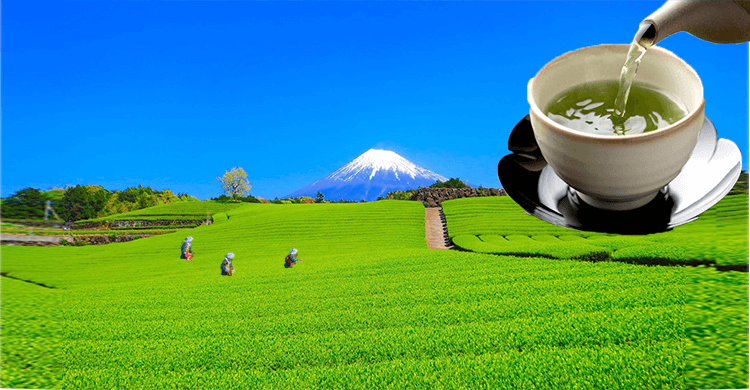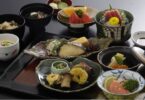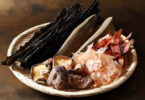Hi how are you? I’d like to talk about “Ocha” (green tea), today’s topic of which is one of “Cool Japan” item that has been becoming more popular all over the world today.
Contents
First, what’s Ocha?
For a long time, Japanese people have consumed green tea to accompany their cuisine, which relies heavily on seafood.
It is said that Japanese people have naturally understood the protective properties of drinking Ocha while eating sushi.
The anti-bacterial properties of green tea catechins have now been scientifically demonstrated.
It has been announced at academic conferences throughout the world that Ocha helps prevent cancer.
In the United States, The University of Texas M.D. Anderson Cancer Center is conducting research into green tea’s cancer inhibiting properties, and the results of this research should be revealed in the near future.
Focusing on the properties of green tea, science is gradually proving the knowledge of our ancestors regarding the medicinal properties of tea.
Ocha is an aromatic beverage commonly prepared by pouring hot or boiling water over cured leaves of the Camellia sinensis, an evergreen shrub (bush) native to Asia.

Camellia sinensis
After water, it is the most widely consumed drink in the world. There are many different types of tea; some, like Darjeeling and Chinese greens, have a cooling, slightly bitter, and astringent flavour.
While others have vastly different profiles that include sweet, nutty, floral or grassy notes.
Tea originated in Southwest China, where it was used as a medicinal drink. It was popularized as a recreational drink during the Chinese Tang dynasty, and tea drinking spread to other East Asian countries.
picking tea leaves
Portuguese priests and merchants introduced it to Europe during the 16th century.
During the 17th century, drinking tea became fashionable among Britons, who started large-scale production and commercialization of the plant in India to bypass the Chinese monopoly.
The term herbal tea refers to drinks not made from Camellia sinensis: infusions of fruit, leaves, or other parts of the plant, such as steeps of rosehip, chamomile, or rooibos.
These are sometimes called tisanes or herbal infusions to prevent confusion with tea made from the tea plant as shown below.
We have various many kinds of、so-called “tea”, such as Black tea, Green tea, Flowering tea, Oolong tea, and Pu-erh tea, and so on in the world.
The tea plucking/harvesting season
However, today I’d like to focus on Green tea that is most Japanese have a habit of drinking the green tea, Ocha everytime we take meals for some purposes, one of which is for relaxation and other is good for health.
What’s Japanese Ocha, then
Green tea is a type of tea that is made from Camellia sinensis leaves that have not undergone the same withering and oxidation process used to make oolong teas and black teas.
Green tea originated in China, but its production and manufacture has spread to many other countries in Asia.
Several varieties of green tea exist, which differ substantially based on the variety of C. sinensis used, growing conditions, horticultural methods, production processing, and time of harvest.
Four major varieties of green tea are Sencha , shown below image (medium-grade green leaf tea) which are most drank for the Japanese people.
Sencha
Houjicha(roasted green tea)

Gyokuro(high-quality refined tea)

Now I’d like to talk about Maccha this time.

How do you prepare Maccha to enjoy drinking?
A millstone turns gently, slowly emitting a fine green powder. This is a form of tea known as maccha that has been drunk in Japan for over 800 years.
Like other kinds of Japanese tea, maccha is made from the dried leaves of the tea plant.
However, in the case of maccha, the leaves are ground to a fine powder. The way it’s served is very different, too.

To prepare ordinary Ocha , hot water is simply poured over the leaves in a teapot. The tea is infused and then poured out. The leaves remain in the pot, so they’re not directly consumed.
Now let’t see how maccha is prepared in the tea ceremony. A teapot is not used. Instead, the powdered tea is placed directly in the bowl from which it will be drunk. Hot water is added, using a bamboo scoop.
Then it is whisked briskly, using a special tea whisk, also made from bamboo. Once the tea is properly mixed with the water, it’s ready to be drunk.
The start of the tea harvest is in April or May, depending on the region. Maccha is a high-quality kind of tea because it is made from the first leaves of the year, nipped while they’re sill budding. Each leaf is carefully plucked by hand one at a time.
Tea bushes grow best in places with direct sunlight and on slopes that are well drained. However, in the plantations where the tea is to be made into maccha, reed screens and straw are placed on frames over the tea bushes to avoid direct sunlight.
Reducing the amount of light gives the leaves a greater depth of flavour.

This method was developed during the Edo period to protect the tea bushes from frost damage in order to ensure that the shogun and his court would have a stable supply of high-quality tea.
Because maccha was considered so valuable, it was carried to the shogun’s capital in elaborate processions.
These days, maccha is no longer confined to the tea ceremony. Here is an array of desserts, all made with maccha.
The unique fragrance and flavour of green tea go well with dairy products, so it’s perfect as an ingredient in Western desserts.

Because maccha is regarded as a healthy drink, and can be used as an ingredient in many types of food, today its popularity is gradually spreading around the world.
Why Tea has the health benefits so much?
The tradition of drinking tea to maintain good health goes a long way back.
In early Buddhist texts and Chinese manuals on healing herbs, the tea plant is consistently described as being a potent medicine for promoting good health and longevity, as well as keeping the mind alert and sharp and treating many ailments, from indigestion to the common cold.
In our modern society, we are learning that there is quite a bit of scientific evidence to support many of these ancient claims.
Medical and health care professionals agree that drinking tea has many benefits and is a healthy addition to any diet.
All types of tea, white, green, oolong and black, are beneficial, though research has shown that some types may contain higher levels of certain polyphenols than others.
For example, green tea is higher in catechins than black tea, though black tea contains theaflavins that green tea does not, due to the higher oxidation.
Ideally, one would try to consume a variety of teas to be able to reap the unique health benefits of each type.
「INGREDIENTS-A SCIENTIFIC APPROACH」
Following new scientific developments, research into the health effects of green tea has advanced significantly.
Studies have shown that green tea is made of several main components that contribute to its character: catechins (texture), caffeine (bitterness), and theanine (flavor), as well as various vitamins and minerals.
Present in large quantities of green tea, catechins (including EGCG) are a type of polyphenol that is also a component of red wine.
Catechins also give green tea its signature texture, and as a potent antioxidant, hinders dangerous free radicals in the body.
Caffeine gives green tea its bitter taste, while increasing alertness, and relieving fatigue. Theanine, an amino acid, gives green tea its taste and acts as a mild relaxant.
Theanine helps to relieve the jittery effect that caffeine can sometimes produce in sensitive individuals.
This makes it a great alternative to coffee which not only has higher levels of caffeine, but does not contain theanine to regulate the unpleasant physical side effects.
These are the main research properties included in green tea. Green tea contains a well-balanced mix of these ingredients.
「MAIN PROPERTIES OF GREEN TEA」
★CATECHIN
Anti-tumorigenesis
Antioxidant effect
Inhibition of hypertension
Anti-hypercholestolemia
Hypoglycemic effect
Strengthens capillaries
Maintains elasticity of the skin
Antimicrobial activity
Prevention of halitosis
Radical scavenging effect*
*Free radicals wreak havoc on normal cells in the human body, causing more rapid aging, as well as abnormal cell growth that can lead to cancer.
Antioxidants, like the catechins in green tea, fight free radicals and help to prevent cancer as well as promote more graceful aging.
★CAFFEINE
Promotion of wakefulness
Eases fatigue and sleeplessness
Diuretic effect
THEANINE (AMINO ACID)
Antagonistic effect against convulsive action of caffeine
(no jittery side effects)
Promotion of a physical sensation of relaxation
Inhibition of hypertension
Improvement of brain function
★CAROTENE
Anti-carcinogenicity
Y-AMINO BUTYRIC ACID
Inhibition of hypertension
FLAVONOIDS
Strengthening of blood vessels
Prevention of halitosis
★VITAMIN C
Antioxidant effect
Prevention of flu
Health maintenance of skin and mucous membranes
Radical scavenging effect
POLYSACCHARIDES
Hypoglycemic effect
★VITAMIN E
Antioxidant effect
Health maintenance of cells
Radical scavenging effect
★ZINC
Supports immune system
Fights colds and influenza
Maintains taste, vision and smell
★FLUORIDE
Prevention of cavities
★CALCIUM
Strengthening and growth of bones
Prevention of osteoporosis
Alleviation of arthritis symptoms
★SAPONINS
Anti-fungal activity
Anti-inflammation
Antiallergenic activity
Anti-obesity
THE SUPER POWERS OF GREEN TEA
Now that we fully understand how nutritional bevarage-Tea is, shall we enjoy your favorite tea today!
Finally, I’d like you to recommend to browse the blog, “Wagashi (Japanese Confectionary)” which goes well with “Ocha” when a tea time.








Leave a Comment